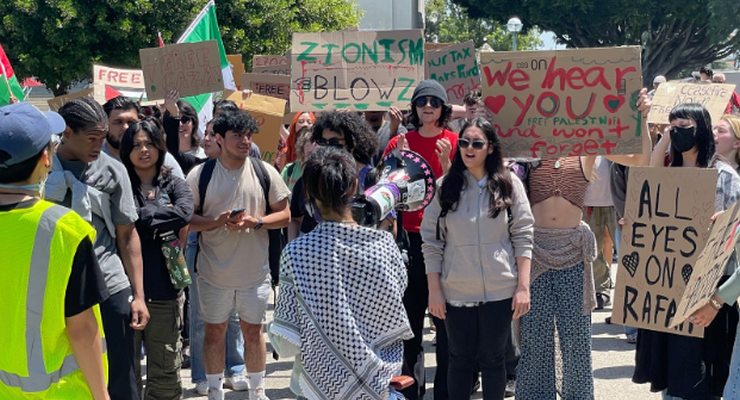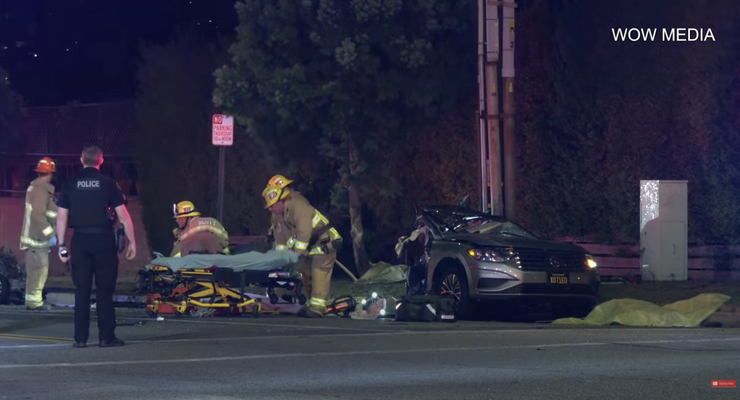
[UPDATED] On behalf of the Redistricting Commission of the Pasadena Unified School District (“PUSD”), we, Co-Chairs of the Commission, are submitting the following for consideration by the County Committee on School District Organization. The PUSD Trustee area map you have before you is the result of careful deliberations by a citizen task force informed by public input received at four public forums preceded by significant public outreach. The map successfully balances the population of the District while respecting a variety of identified communities of interest. This map was then approved by the PUSD Board of Trustees. We believe it would be inappropriate to overturn this public process at this late date for the County to impose its own maps without the benefit of this public process.
We provide for you a snapshot of the Commission’s process timeline, as follows:
• June 2021: The District distributed demographer consultant bids per its usual process. Only two demographers responded.
• July 2021: Commissioner applications were received and approved by the Board of Education.
• August 2021: The Commission approved one consultant who attended one introductory meeting.
• September 2021: The Commission received Brown Act training, conducted by District counsel.
• November 2021: The Commission was forced to hire a second demographer due to the unresponsiveness of the first consultant.
• December 2021: The second consultant provided the Decennial Compliance Review and maps scenarios were reviewed over three meetings. A third demographer was hired due to the emergency illness of the second demographer. This delayed some data being posted. However, all CVAP and Census population data were posted prior to the first public hearing.
• January 2022: Four public hearings were conducted for public input, including one in Spanish. A summary of input was provided to the Commission for consideration. Two maps were presented to the Board of Education. The Commission unanimously approved one map.
• February 2022: A fifth public hearing was held at a board meeting and the Board of Education acknowledged receipt of the map selected by the Commission. At a following board meeting, the Board majority approved the map selected by the Commission and submitted the information to the County Committee.
As you can see, in order to meet the deadline, the Commission needed to work efficiently and diligently to finalize the work on time while being deluged with delays beyond its control.
As was noted at your March meeting, PUSD is relatively unique in that it is a district founded by way of a city charter. To that end, Article VII of the Pasadena City Charter establishes the PUSD board and outlines – and limits – its authority. Section 713 of said article sets forth the unique procedure for redistricting in PUSD. Specifically, the Charter requires the PUSD Board “establish, by resolution, a Redistricting Commission to recommend to the Board the configuration of geographic sub-districts for the area served by the Pasadena Unified School District.” Section 713 continues in subpart D to state: “The geographic sub-districts recommended by the Redistricting Commission shall be adopted by the Board, unless amended by a two-thirds majority of the Board.” Emphasis is added to underscore the non discretionary nature of the Charter, and the limits imposed upon the Board in accepting the Redistricting Commission’s final map. The PUSD Board did in fact attempt a vote at a two-thirds majority to amend the map, as permitted by the Charter; that vote failed. Instead, a majority1 of the Board voted to adopt the resolution accepting the Commission’s map as was required and mandated of them by the Pasadena City Charter.
The following are the issues raised by [PUSD School Board] Clerk Kenne with the Commission’s rebuttals:
Little training was provided to the Redistricting Commission on state and federal voting laws. Legal training was requested by the commission but not given (except on the Brown Act).
Rebuttal: The commission was instructed on CA Ed Code 5019.5. State and federal laws were discussed in the PowerPoint presented by Davis Demographics during the interview process. State and federal laws (such as packing) were mentioned throughout the process. It was mentioned multiple times that the changes in the trustee areas demographics did not deviate significantly from the demographics of the current trustee areas. Deviations in trustee area demographics were consistent with changes of overall PUSD demographics. Throughout the process, the Commission was guided by two demographers with experience in the redistricting process.
There was limited discussion and attention to communities of interest — even those identified when the maps were last drawn.
Rebuttal: This was discussed multiple times and looked at multiple ways. The commission discussed many COIs, not only race, including city boundaries, county residence, neighborhood associations, road access to similar areas, schools of choice by parents, area makeup such as commercial and residential, areas influenced by local educational institutions, and others.
Citizen Voting Age Population figures were not shared with the Commission prior to the decision on the two maps to take to public hearings. This results in a CVAP Latino Plurality in District 4 being overlooked and diluted in the commission’s maps.
Rebuttal: California Ed Code 5019.5 does not require that CVAP be used to adjust trustee areas. CVAP information was considered as additional data and for the area with the largest Latino population (District 3), the CVAP was increased from 43.6% (under existing districts) to 44.4% in the approved map before you.
The two maps produced for the public by the Commission were produced over 3 meetings over 6 days with no public input. No public outreach was done for these meetings other than the required Brown Act notices. The preliminary data and maps used during this 6 day process were not posted for the public per Brown Act requirements. No CVAP information was available to the Commission or public during this time.
Rebuttal: The two scenarios were not created in six days but over the entire process. They were derived by making changes and adjustments from previous scenarios. Furthermore, each commission meeting was posted and open to public participation. There was minimal public attendance at the commission meetings. California Ed Code 5019.5 does not require that CVAP be used to adjust trustee areas.
Public outreach for the public hearings was late (less than 1 week prior to first public hearing). Prior to the public hearings, the information shared with the public consisted only of one page map drawings. Additional census or CVAP information was not shared.
Rebuttal: Allegra Consulting made extensive public outreach efforts. The Commission believed, and was advised by Allegra Consulting, that meaningful public input would be best achieved in reaction to the actual map proposals. Thus, the map options were presented at the heavily publicized public meetings. Public outreach
No communities of interest considerations were shared at the four public hearings or in any of the posted materials.
Rebuttal: Communities of interest were discussed at several of the Commission’s public meetings, such as the Armenian community, the Latino community, and the Black community. However, the Commission’s work was to focus on balancing the population as a whole.
When asked if legal review of the maps had been done, the district staff response was the following: “Absent major changes in District ethnic population in the 2020 census, there was less of a need to reevaluate the current maps for federal and state compliance other than to verify the maps recommended have adjusted boundaries so that the population of each are nearly equal, which the commission has done.”
Rebuttal: This response was prepared by legal counsel, not district staff.
Concerns:
1. Many residents are being moved by the changes — around 20,000. For almost all of these moves, no communities of interest were taken into consideration.
Rebuttal: California Ed Code does not indicate a maximum number of voters moved and does not make reference to moving voters in any way. To meet the criteria from Ed Code 5019.5(a)(1) required voters to be moved between trustee areas: “The population of each area is, as nearly as may be, the same proportion of the total population of the district as the ratio that the number of governing board members elected from the area bears to the total number of members of the governing board.” The commission discussed many communities of interest, not only race, such as ethnicity, city boundaries, county residents, neighborhood associations, road access to similar areas, schools of choice by areas, and others.
2. 7000 residents will be moved so that they will vote in the 2024 election rather than the 2022 election. These are residents who have not voted in a school board election since 2017 due to the local/state election alignment.
Rebuttal: Nothing in Ed Code indicates this is an issue.
3. District 4 had a Latino CVAP plurality with the 2020 census numbers. This plurality was diluted in the proposed map.
Rebuttal: Adjustments to the trustee area to comply with Ed Code 5019.5 did change some demographics ratios; however, this is unavoidable. The Hispanic population is still the plurality along with an increase in Asian and multi-race populations. The Hispanic populations went from 47.1% to 42.7%. The White population went from 27.3% to 29.8%. The Asian population went from 14% to 16.5%
4. The Armenian community of interest was not considered while drawing the maps even though considered in the 2012 map creation. The move of Upper Hastings Ranch from District 2 to District 6 appears to dilute this community (looking at data used in the 2012 process). After this issue was raised, student data was used as a proxy which, given low district enrollment, is not representative.
Rebuttal: The Armenian community of interest was discussed by the commission. Student data was used as a proxy because there was no other data available that would allow the commission to meet Ed Code and Pasadena Charter timelines.
5. The initial map proposed to the Commission was compliant, changed the district for only 1200 residents, did not change the voting year for any residents but was rejected mainly because an incumbent board member would have moved between districts. Since that time, this board member has announced he will not be running for re-election. This map was never considered by the Commission again.
Rebuttal: The initial map (Scenario A) was intended as a minimum move example to commission members. Scenario A had a maximum variance of 9.8%, very close to the widely used 10% threshold. Scenario A did not meet the Ed Code criteria in the sense that it does not balance the population “as nearly as may be”. The board member’s announcement of non-reelection was received after the Commission received initial public input; hence, it was too late to entertain any new maps.
6. There was a Pasadena Unified board majority (4-3) in favor of modifying the map recommended by the commission. However, due to the City of Pasadena Charter language 5 votes were needed to amend the map. This majority vote is still significant in showing there were concerns with the map.
Rebuttal: The actual vote was 4-2 (one board member absent). This is irrelevant. The commission did its job based upon the mandate given and California Ed Code.
In summary, given the many issues with the process, it does not make sense to make such major changes to the board trustee areas. As a member of the Pasadena Unified Board of Education, I raised my issues with the maps at two board meetings in January and February. I suggested that a compliant map with minimal impact exists that could be used instead (see Scenario A). I hope the County Committee of School District Organization will consider these factors in their decision to approve the map provided by the commission and Pasadena Unified or to develop their own map.
Rebuttal: Board Clerk Kenne violated Board Bylaw 9200 which states, in part: Individually, a Board member may not commit the district to any policy, act or expenditure. The Board member represents and acts for the community as a whole and does not represent any fractional segment of the community. Clerk Kenne did not inform the full board of her intent to act independently, thus overstepping her limited authority as one member of a seven-member Governing Board. Clerk Kenne’s motives are unclear; however, it should be noted that the map she favors does not make any changes to her trustee area.
The Commission unanimously requests that the County Committee not spend any more of its time or funds on this issue and that it accept the map proposed.
Sincerely,
PUSD Redistricting Commissioners














 0 comments
0 comments


